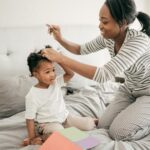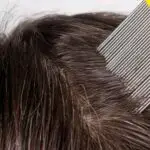Can Head Lice Get in Your Nose?
Lice are small parasitic insects that live on human scalps and are spread through contact with infested personal items. The eggs are white and are small enough to be mistaken for dandruff. They hatch in about 6 to 9 days and remain in the hair. The next stage is the nymph stage, which resembles an adult head louse but is only about the size of a pinhead. Then in about 7 days, the nymph is mature and ready to be transmitted to new hosts.
To avoid the transmission of lice, all clothing and other items that come into contact with the child’s head must be washed in hot water and kept in a plastic bag. To avoid cross-infestation, parents must discuss the risks of lice with their children and avoid sharing personal belongings with them. Children should also avoid physical contact with people who have lice. It is also important to check all household members for head lice and treat them as soon as they’re detected.
Treatments for head lice include topical application of permethrin or pyrethrin-based products. These products can kill lice and their nits, but they should only be used on children older than two years, as they may cause severe allergic reactions. The treatment should be repeated if necessary, and the lice are not completely removed.







